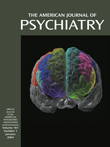This book, published by two well-known researchers in the field of violence and mental illness, is a well-documented research project using a longitudinal study of males and females born in 1953, who were either born in Stockholm or raised there from the age of 10, until 1983, when the data were collected. The book is part of the Cambridge Criminology Series and focuses on the relationship between criminality and violent behavior among the mentally disordered. The authors divide the subjects into five general groups: 1) those with diagnoses of major mental disorders, 2) those with alcohol- and/or drug-related disorders, 3) those with other mental disorders, 4) those with mental retardation, and 5) all cohort members who had never been admitted to a psychiatric ward or to a special class in school for retarded children. The last group, which was the most numerous, constituted the control or comparison group. The three major mental illnesses included are schizophrenia, major depression, and bipolar disorder.
What seems striking but not unexpected is the preponderance of subjects with alcoholism and/or drug dependence among those committing the most violent and nonviolent crimes. Generally, the mentally disordered are shown to commit more crimes per population than those who are not mentally disordered. As shown in other studies, the presence of drug or alcohol problems along with mental disorder elevates the potential for criminal behavior.
The authors present a separate section on major mental disorder among homicide offenders. Their investigation shows that
proportionately more of the men and women who developed the major mental disorders, than those of normal intelligence who were never admitted to a psychiatric ward, were convicted of non-violent and violent crimes.…The differences in the prevalence rates between the mentally ill and non-retarded, non-disordered subjects were greater for violent than for non-violent crime. Further, the increase in the risk of offending associated with the major mental disorders was greater for women than for men.
The authors offer three hypotheses to help explain the greater prevalence of criminality and violence among people suffering from major mental disorders. First, they suggest that the higher rate of criminality and violence among the mentally ill might be attributable to the fact that arrest and conviction are facilitated for these subjects:
Persons suffering from major mental disorders are not more likely to commit crimes than persons without these disorders. However, they are more likely to be detected by the police and successfully prosecuted.
A second hypothesis is that
implementation of the policy of deinstitutionalization in the mental health field…has led to a situation in which many persons with major mental disorders receive no treatment or inadequate and/or inappropriate treatment.…This lack of care is associated with the commission of illegal acts.
The authors suggest that because of the lack of adequate and appropriate treatment, people with major mental disorders become symptomatic while living in the community.
The third hypothesis suggests that there are two types of offenders with major mental disorders. One group are the early starters, who display a stable pattern of antisocial behavior from childhood or early adolescence, and the second are the late starters, who show no antisocial or criminal behavior until the symptoms of the major mental disorder become apparent.
The implications of these hypotheses are of great significance. It is clear in many cases that individuals with mental illness are not as cautious or careful about being detected or caught, since many do not feel their criminal behavior is “wrong.” By far, the most important implication is that of hypothesis 2, which reflects on the major changes in mental health law that have occurred over the past four decades. Whereas the rights of the mentally ill have been increased and established, the implementation of appropriate and effective treatment in the community has lagged. There is often a delay in effecting proper resolutions that are necessary because of the results of legal changes that affect the disposition of the mentally ill.
The third hypothesis is also important in diagnosis and assessment of individuals who commit crimes and determining how preventive psychiatry may be helpful for those who are “early starters.”
The authors end this fine book with a chapter in which they describe “implications for mental health and criminal justice policy” for legislators and law enforcement people. They also have a section on implications for assessment and treatment and for future research in this very complex but important field.
The book is well documented, demonstrating a longitudinal study of cohorts in Stockholm, Sweden, for the 30 years between 1953 and 1983. The study has major implications for forensic psychiatry, for child and adolescent psychiatry, and for legislators who make policy decisions affecting the mentally ill and the criminal population.

